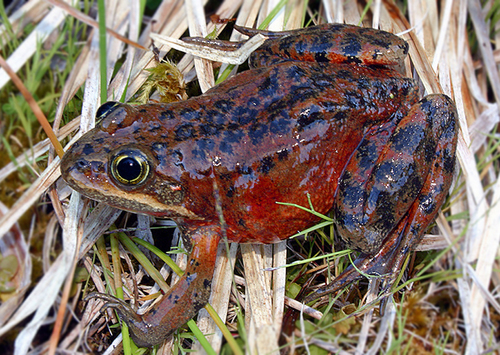
Oregon Spotted Frog
The Oregon spotted frog (Rana pretiosa) enchants with its reddish-brown, spot-speckled skin. A wetland dweller, it plays a crucial role in its ecosystem as both predator and prey. Listen for its unique calls echoing through marshes during mating season—a soundscape of survival and charm.
Length: 4 - 10 cm
Size
Brown, Red, Cream, Orange, Olive, Multi-colored
Color
Low
Aggression
Vulnerable
Conservation Status
Decreasing
Population Trend
Characteristics
Rana pretiosa, known as the Oregon spotted frog, is an amphibian native to the Pacific Northwest. It thrives in wetlands with abundant aquatic vegetation. This species is noted for its distinctive reddish-brown coloration with black spots, and its unique vocalizations during the breeding season.
Distribution Range of the Oregon Spotted Frog
Rana pretiosa, commonly known as the Oregon spotted frog, is native to the Pacific Northwest region of North America. Its geographical distribution includes parts of the United States such as Washington, Oregon, and northern California, as well as British Columbia in Canada.
Oregon Spotted Frog's Habitat
Environmental Conditions
The Oregon spotted frog typically inhabits wetlands, including marshes, ponds, and slow-moving streams. It prefers areas with abundant aquatic vegetation, which provides cover and breeding sites. The species thrives in environments with a temperate climate, experiencing seasonal variations with wet winters and dry summers.
Ecological Niche
Rana pretiosa is primarily aquatic and is adapted to living in freshwater habitats. It plays a role in the ecosystem as both predator and prey. As a predator, it feeds on insects and other small invertebrates. As prey, it is an important food source for birds, larger amphibians, and mammals. The species' reliance on wetland habitats makes it sensitive to changes in water levels and quality, highlighting its role as an indicator of ecosystem health.
Copyright @ Nature Style Limited. All Rights Reserved.
 English
English